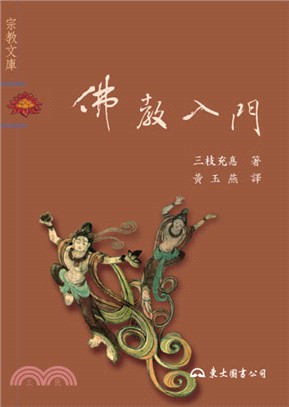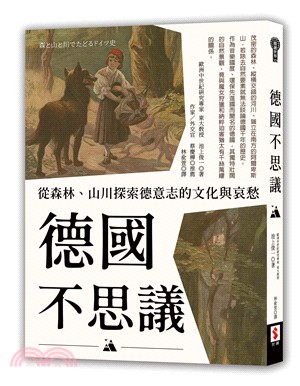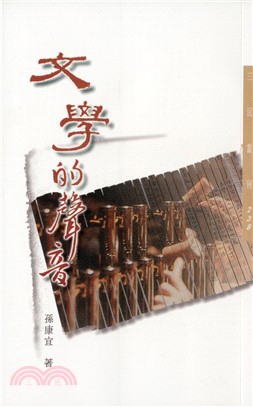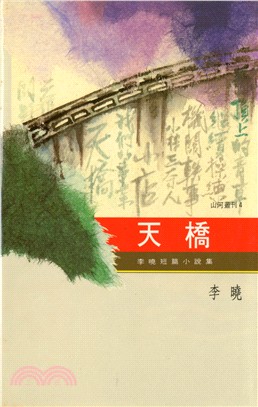CRIME SCENE MANAGEMENT - SCENE SPECIFIC METHODS
商品資訊
相關商品
商品簡介
目次
商品簡介
Crime Scene Management is an accessible introduction to the common forms of evidence that may be encountered at a scene of crime and the techniques used for recovery of that evidence. The book is clearly focused on the techniques for handling crime scenes from the role of the first officer attending through to the specialist personnel who may be called to deal with specific evidence types. Clearly structured to enhance student understanding, methods covered include, DNA-rich samples, fingerprints, toolmarks and footwear impressions. Later chapters move on to consider examples of specialised scenes such as arson and vehicle crime. The content of each chapter can be tested with self-assessment questions to reinforce student understanding.
Written for undergraduate students studying forensic science courses, Crime Scene Management will also be of interest to scene of crime officers, police officers and legal professionals as well as students taking courses in criminalistics and law.
*
Focuses on the crime scene and on the science underpinning the gathering of evidence at the scene
* Written in conjunction with experienced practitioners
* Supplementary website to include figures from the book and further references
* Suitable for delivery in a modular course.
* Chapters written by a team consisting of experts and academics to ensure an accessible and well-informed text.
* Supplementary website includes figures from the text and further references
* Includes crime scene simulations to test application of knowledge
Written for undergraduate students studying forensic science courses, Crime Scene Management will also be of interest to scene of crime officers, police officers and legal professionals as well as students taking courses in criminalistics and law.
*
Focuses on the crime scene and on the science underpinning the gathering of evidence at the scene
* Written in conjunction with experienced practitioners
* Supplementary website to include figures from the book and further references
* Suitable for delivery in a modular course.
* Chapters written by a team consisting of experts and academics to ensure an accessible and well-informed text.
* Supplementary website includes figures from the text and further references
* Includes crime scene simulations to test application of knowledge
目次
Introduction and Use of This Text.
List of Contributors.
PART I Crime Scene Principles.
1 The Crime Scene Context (Raul Sutton).
1.1 Introduction.
1.2 What is a crime?
1.3 The nature of the UK legal system.
1.4 The legal system in England and Wales.
1.5 Other courts.
1.6 The judicial system in Northern Ireland.
1.7 The Scottish legal system.
1.8 Judicial processes that deal with causes of death.
1.9 What constitutes evidence?
1.10 The chain of events in evidence gathering.
1.11 The relationships between evidence gatherers.
1.12 Health and safety considerations.
Suggested further reading
2 First Officer Attending (Keith Trueman).
2.1 Introduction.
2.2 Response to incidence report.
2.3 Personnel involved in the investigative process.
2.4 Recording and recovery of scientific evidence.
2.5 Initial Considerations of first officer attending (FOA).
2.6 Dealing with the victim.
2.7 Dealing with witnesses.
2.8 Dealing with suspects.
2.9 Dealing with the crime scene(s).
2.10 Documentation.
2.11 Dealing with violent crime.
2.12 Summary and conclusion.
3 The Role of the Scenes of Crime Officer (Keith Trueman).
3.1 Introduction.
3.2 Training the SOCO.
3.3 The responsibilities of a SOCO
3.4 Forensic evidence.
3.5 Request for SOCO attendance at crime scenes.
3.6 Actions when attending the crime scene.
3.7 Initial scene assessment (including health and safety considerations).
3.8 Planning evidence recovery.
3.9 Record the evidence.
3.10 The elimination process.
3.11 Details of evidence recovered.
3.12 Integrity, continuity and contamination.
3.13 Packaging materials.
3.14 Conclusion.
4 Police Photography (Chris Crowe).
4.1 Introduction.
4.2 General guidelines.
4.3 Equipment.
4.4 Exposure.
4.5 mage quality/size.
4.6 Depth of field.
4.7 White balance.
4.8 Image data.
4.9 Flash photography.
4.10 Room interiors.
4.11 Vehicles.
4.12 Exhibits.
4.13 Assaults and woundings.
4.14 Night photography.
4.15 Footwear impressions.
4.16 Fingerprints.
4.17 Recording video evidence at crime scenes.
4.18 The use of digital images in court.
Suggested further reading.
PART II Evidence Gathering Techniques.
5 Fingerprints (David Charlton).
5.1 Introduction.
5.2 The nature of friction ridge skin.
5.3 The structure of friction ridge skin.
5.4 Friction ridge growth.
5.5 Principles of friction ridge identification.
5.6 Comparison methodology.
5.7 Chemical composition of latent prints.
5.8 Identification of common locations for prints.
5.9 The use of powdering techniques to enhance latent finger marks.
5.10 Chemical development techniques.
5.11 Laboratory and scene applications.
5.12 Fingerprints in bodily fluids.
5.13 Scenes of fire.
5.14 Optimal methods to reveal fingerprints (laser and other light sources).
5.15 New and emerging techniques.
5.16 Summary.
Acknowledgments.
Selected further reading.
6 DNA-Rich Evidence (Terry Bartlett).
6.1 Introduction.
6.2 Historical background.
6.3 The structure and properties of DNA.
6.4 DNA analysis.
6.5 Types of DNA testing.
6.6 Biological evidence.
6.7 Procedures for collection of biological evidence: general considerations.
6.8 Limitation of DNA evidence.
6.9 Elimination and reference samples.
Summary.
References.
7 Blood Pattern Analysis (Terry Bartlett and Raul Sutton).
7.1 `Introduction.
7.2 History of the development of blood spatter as a scientific discipline.
7.3 Composition of blood.
7.4 Physical properties of blood.
7.5 Causes of bleeding.
7.6 Blood dynamics.
7.7 Drop-surface impact and droplet pattern.
7.8 Determination of area of origin of spatter.
7.9 Cast-off patterns.
7.10 Arterial damage patterns.
7.11 Non-spatter patterns.
7.12 Physiologically altered blood stains (PABS).
7.13 Volume blood stains.
7.14 Composite patterns.
7.15 Investigative transfer and contamination issues.
7.16 Recording traces.
7.17 Summary.
Suggested further reading.
8 Physical Evidence (Craig Williams).
8.1 Introduction.
8.2 Tool Marks.
8.3 Clothing.
8.4 Fibres.
8.5 Footwear impressions.
8.6 Glass fragments.
8.7 Glass fragmentation.
8.8 Soils.
8.9 Firearms.
8.10 Scene recovery of firearms.
8.11 Gunshot residues (GSR).
8.12 Drugs of abuse (DOA).
8.13 The crime scene characteristics of various DOAs.
8.14 Presumptive tests for drugs.
8.15 Amateur explosives.
8.16 Summary.
Suggested further reading.
PART III Specialised Scenes and Report Writing.
9 The Examination of Fire Scenes (Chris J. Perry).
9.1 Introduction.
9.2 The nature of fire.
9.3 The oxygen demands of fires.
9.4 Flame and fire classifications.
9.5 Types of evidence specific to fire scenes.
9.6 Locating the seat of the fire.
9.7 Evidence gathering methods.
9.8 Methods for ascertaining whether a crime has been committed.
9.9 Health and safety considerations.
9.10 Summary.
Suggested further reading
10 Examination of Recovered Stolen Motor Vehicles (Keith Trueman).
10.1 Introduction.
10.2 What is a motor vehicle?
10.3 The definition of an auto crime.
10.4 Auto crime scene examinations.
10.5 Requests to attend an 'auto crime' scene.
10.6 The examination process.
10.7 Conclusion.
11 Preparing Reports and Statements (Keith Trueman).
11.1 Introduction.
11.2 Documentation at the crime scene.
11.3 Photography.
11.4 Plans, sketches and diagrams.
11.5 The exhibit label.
11.6 Handling the evidence.
11.7 Statements of evidence.
11.8 Criminal justice Act 1967 section 9.
11.9 Crime scene examination statements.
11.10 Conclusion.
Appendix Police Service Rank Structure.
Index.
List of Contributors.
PART I Crime Scene Principles.
1 The Crime Scene Context (Raul Sutton).
1.1 Introduction.
1.2 What is a crime?
1.3 The nature of the UK legal system.
1.4 The legal system in England and Wales.
1.5 Other courts.
1.6 The judicial system in Northern Ireland.
1.7 The Scottish legal system.
1.8 Judicial processes that deal with causes of death.
1.9 What constitutes evidence?
1.10 The chain of events in evidence gathering.
1.11 The relationships between evidence gatherers.
1.12 Health and safety considerations.
Suggested further reading
2 First Officer Attending (Keith Trueman).
2.1 Introduction.
2.2 Response to incidence report.
2.3 Personnel involved in the investigative process.
2.4 Recording and recovery of scientific evidence.
2.5 Initial Considerations of first officer attending (FOA).
2.6 Dealing with the victim.
2.7 Dealing with witnesses.
2.8 Dealing with suspects.
2.9 Dealing with the crime scene(s).
2.10 Documentation.
2.11 Dealing with violent crime.
2.12 Summary and conclusion.
3 The Role of the Scenes of Crime Officer (Keith Trueman).
3.1 Introduction.
3.2 Training the SOCO.
3.3 The responsibilities of a SOCO
3.4 Forensic evidence.
3.5 Request for SOCO attendance at crime scenes.
3.6 Actions when attending the crime scene.
3.7 Initial scene assessment (including health and safety considerations).
3.8 Planning evidence recovery.
3.9 Record the evidence.
3.10 The elimination process.
3.11 Details of evidence recovered.
3.12 Integrity, continuity and contamination.
3.13 Packaging materials.
3.14 Conclusion.
4 Police Photography (Chris Crowe).
4.1 Introduction.
4.2 General guidelines.
4.3 Equipment.
4.4 Exposure.
4.5 mage quality/size.
4.6 Depth of field.
4.7 White balance.
4.8 Image data.
4.9 Flash photography.
4.10 Room interiors.
4.11 Vehicles.
4.12 Exhibits.
4.13 Assaults and woundings.
4.14 Night photography.
4.15 Footwear impressions.
4.16 Fingerprints.
4.17 Recording video evidence at crime scenes.
4.18 The use of digital images in court.
Suggested further reading.
PART II Evidence Gathering Techniques.
5 Fingerprints (David Charlton).
5.1 Introduction.
5.2 The nature of friction ridge skin.
5.3 The structure of friction ridge skin.
5.4 Friction ridge growth.
5.5 Principles of friction ridge identification.
5.6 Comparison methodology.
5.7 Chemical composition of latent prints.
5.8 Identification of common locations for prints.
5.9 The use of powdering techniques to enhance latent finger marks.
5.10 Chemical development techniques.
5.11 Laboratory and scene applications.
5.12 Fingerprints in bodily fluids.
5.13 Scenes of fire.
5.14 Optimal methods to reveal fingerprints (laser and other light sources).
5.15 New and emerging techniques.
5.16 Summary.
Acknowledgments.
Selected further reading.
6 DNA-Rich Evidence (Terry Bartlett).
6.1 Introduction.
6.2 Historical background.
6.3 The structure and properties of DNA.
6.4 DNA analysis.
6.5 Types of DNA testing.
6.6 Biological evidence.
6.7 Procedures for collection of biological evidence: general considerations.
6.8 Limitation of DNA evidence.
6.9 Elimination and reference samples.
Summary.
References.
7 Blood Pattern Analysis (Terry Bartlett and Raul Sutton).
7.1 `Introduction.
7.2 History of the development of blood spatter as a scientific discipline.
7.3 Composition of blood.
7.4 Physical properties of blood.
7.5 Causes of bleeding.
7.6 Blood dynamics.
7.7 Drop-surface impact and droplet pattern.
7.8 Determination of area of origin of spatter.
7.9 Cast-off patterns.
7.10 Arterial damage patterns.
7.11 Non-spatter patterns.
7.12 Physiologically altered blood stains (PABS).
7.13 Volume blood stains.
7.14 Composite patterns.
7.15 Investigative transfer and contamination issues.
7.16 Recording traces.
7.17 Summary.
Suggested further reading.
8 Physical Evidence (Craig Williams).
8.1 Introduction.
8.2 Tool Marks.
8.3 Clothing.
8.4 Fibres.
8.5 Footwear impressions.
8.6 Glass fragments.
8.7 Glass fragmentation.
8.8 Soils.
8.9 Firearms.
8.10 Scene recovery of firearms.
8.11 Gunshot residues (GSR).
8.12 Drugs of abuse (DOA).
8.13 The crime scene characteristics of various DOAs.
8.14 Presumptive tests for drugs.
8.15 Amateur explosives.
8.16 Summary.
Suggested further reading.
PART III Specialised Scenes and Report Writing.
9 The Examination of Fire Scenes (Chris J. Perry).
9.1 Introduction.
9.2 The nature of fire.
9.3 The oxygen demands of fires.
9.4 Flame and fire classifications.
9.5 Types of evidence specific to fire scenes.
9.6 Locating the seat of the fire.
9.7 Evidence gathering methods.
9.8 Methods for ascertaining whether a crime has been committed.
9.9 Health and safety considerations.
9.10 Summary.
Suggested further reading
10 Examination of Recovered Stolen Motor Vehicles (Keith Trueman).
10.1 Introduction.
10.2 What is a motor vehicle?
10.3 The definition of an auto crime.
10.4 Auto crime scene examinations.
10.5 Requests to attend an 'auto crime' scene.
10.6 The examination process.
10.7 Conclusion.
11 Preparing Reports and Statements (Keith Trueman).
11.1 Introduction.
11.2 Documentation at the crime scene.
11.3 Photography.
11.4 Plans, sketches and diagrams.
11.5 The exhibit label.
11.6 Handling the evidence.
11.7 Statements of evidence.
11.8 Criminal justice Act 1967 section 9.
11.9 Crime scene examination statements.
11.10 Conclusion.
Appendix Police Service Rank Structure.
Index.
主題書展
更多
主題書展
更多書展本週66折
您曾經瀏覽過的商品
購物須知
外文書商品之書封,為出版社提供之樣本。實際出貨商品,以出版社所提供之現有版本為主。部份書籍,因出版社供應狀況特殊,匯率將依實際狀況做調整。
無庫存之商品,在您完成訂單程序之後,將以空運的方式為你下單調貨。為了縮短等待的時間,建議您將外文書與其他商品分開下單,以獲得最快的取貨速度,平均調貨時間為1~2個月。
為了保護您的權益,「三民網路書店」提供會員七日商品鑑賞期(收到商品為起始日)。
若要辦理退貨,請在商品鑑賞期內寄回,且商品必須是全新狀態與完整包裝(商品、附件、發票、隨貨贈品等)否則恕不接受退貨。
























